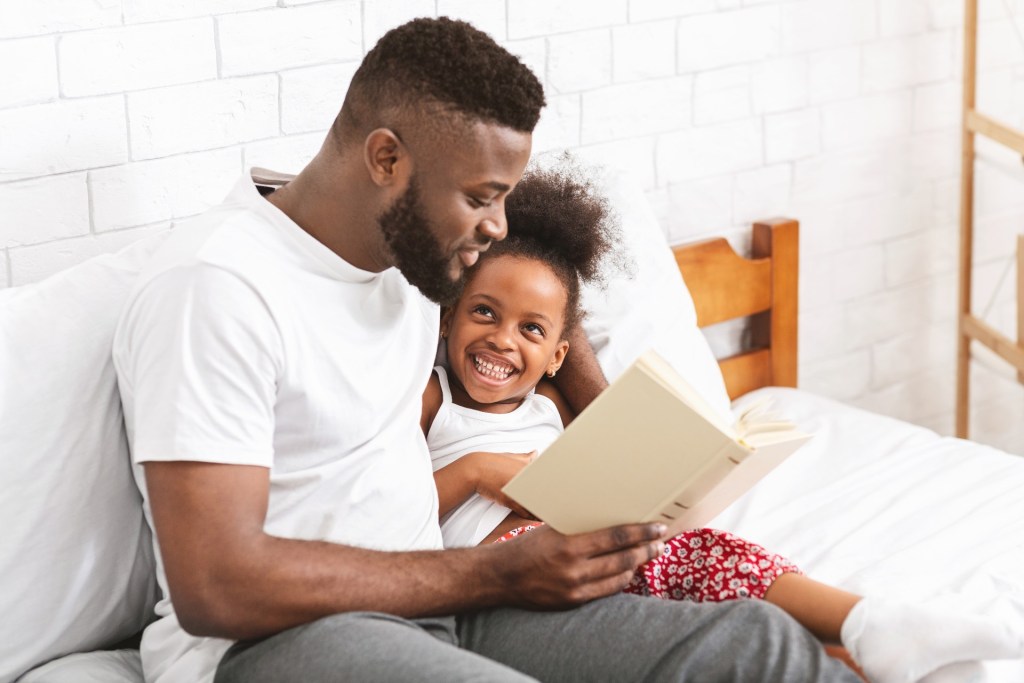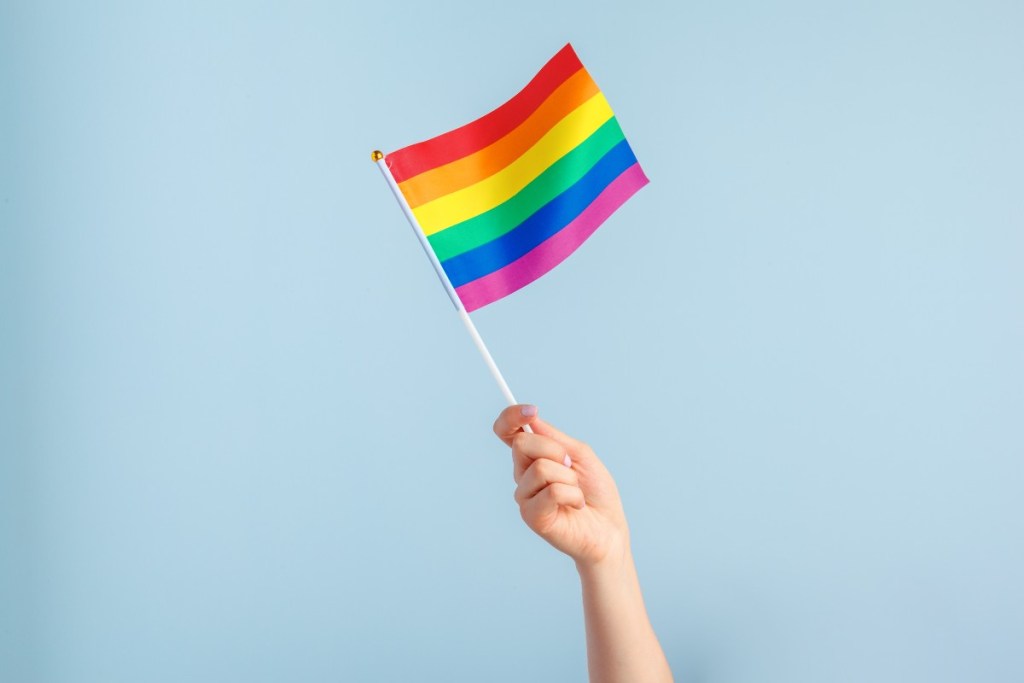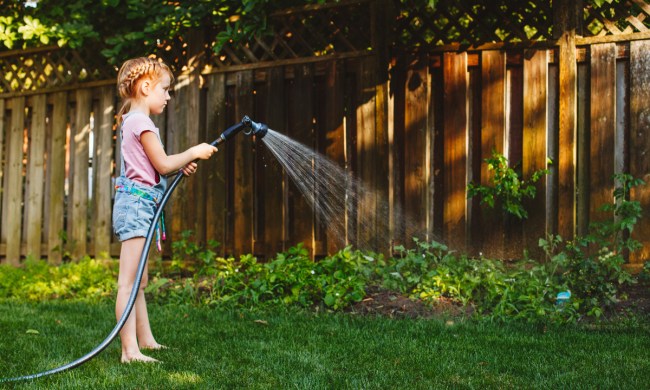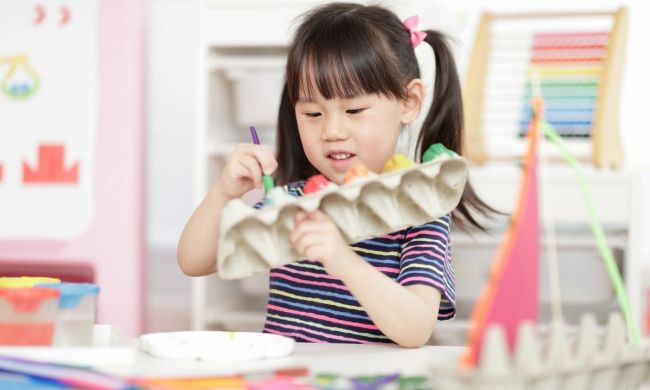As parents, you know preschoolers say the cutest things and sometimes ask the hardest questions. Preschoolers are super curious. As they start attending school and making friends, preschoolers are exposed to lots of new things and people. This is where those difficult questions typically come from. Questions like “Why is that flag a rainbow?” or “Why does Bobby have two mommies and not a daddy?” are bound to come up at some point. So, it can be helpful to have an idea about what to say to kids about LGBTQ identity when they ask. You may find talking to your preschoolers and kindergarteners about it uncomfortable because you’re unsure how to broach the topic, but knowing the resources at your disposal takes away a lot of the anxiety.
LGBTQ
Knowing what LGBTQ stands for and how to explain it to kids is step No. 1. Remember, they are young, so specifics about sexual orientation aren’t needed. LGBTQ is an acronym for “lesbian, gay, bisexual, transgender, and queer.” The “Q” in LGBTQ doesn’t always stand for queer. In many instances, it means “questioning” — the person is still exploring.
Helpful resources for answering those tough questions
Welcoming Schools is a wonderful resource for teachers regarding LGBTQ identity, but it is also a big help to parents. The website has great articles on answering those awkward questions and statements like, “Why is that man in a dress?” “Boys can’t wear pink,” or “Girls can’t get married.” If you’re struggling to define LGBTQ in terms children will understand, Welcoming Schools offers ideas on the topic.
Queer Kid Stuff on YouTube has a four-part video series explaining the LGBTQ acronym in a child-centered way. Lindsay Amer hosts the channel along with her teddy bear co-host. It might be helpful for parents to watch the videos solo in order to give themselves a better idea about how to tackle those tough questions before they’re asked.

LGBTQ children’s books
If your child comes home from a playdate or birthday party and is curious why a friend’s family has two moms or two dads, one way to answer the questions is with a kids’ book. There are several LGBTQ children’s books geared toward preschoolers. Here are some titles you may find helpful when talking to your preschooler about LGBTQ identity:
- Mommy, Mama, and Me by Lesléa Newman
- Daddy, Papa, and Me by Lesléa Newman
Gender bias starts pretty early in life, and kids get the idea that girls wear pink and boys wear blue. When that discussion comes up, it might be time to read Robb Pearlman’s Pink is for Boys. This is a fun book to read in school and at home, because it tosses all those tired stereotypes about boys and girls and what they wear and like to play with out the window.
Embrace differences
When you’re wondering what to say to your preschooler about LGBTQ, the answer lies in accepting and embracing differences. Why does Sarah have two mommies? The simple answer is because every family is different. When you are talking to 3, 4, 5, and 6-year-olds, the answer actually is that straightforward. Preschoolers don’t understand and don’t need to know about sexual orientation. That discussion is for later years. Young children think every household is like theirs.
So, when they step outside in the neighborhood and see it isn’t the same, they look to you for an explanation. Every family is different. Some have one parent. Others have two, and that’s okay. The same goes for those dreaded gender stereotypes. Why is the man wearing a dress? The answer is because it makes him feel happy. Don’t we all like to wear what makes us feel good?

Be calm and smile
Preschoolers always seem to come out with stuff when you’re standing in a long line at the grocery store, and they always talk very loud. It’s all right. As parents, we all understand because we have all been there. Your reaction to an uncomfortable question tells kids a lot. So, it’s important to answer it simply and smile. If there’s a question you’re unsure of, like “What does a rainbow flag mean?” tell your child you’re not sure, and you’ll Google it together later.
The rainbow flag has become a symbol of the LGBTQ movement, and the different colors represent diversity: Red for life, orange for healing, yellow for sunshine, green for nature, blue for serenity, and purple for spirit. Knowledge is power, and when you’re talking to your kids about LGBTQ identity, the more you understand, the easier it is to answer those questions.
There are a lot of LGBTQ children’s books that are fun to read during Pride Month in June or when questions come up. Websites like Welcoming Schools can give you a window into providing kids more detailed explanations when needed. There are even helpful YouTube videos on LGBTQ identity that are kid-centered and a helpful resource for parents.



